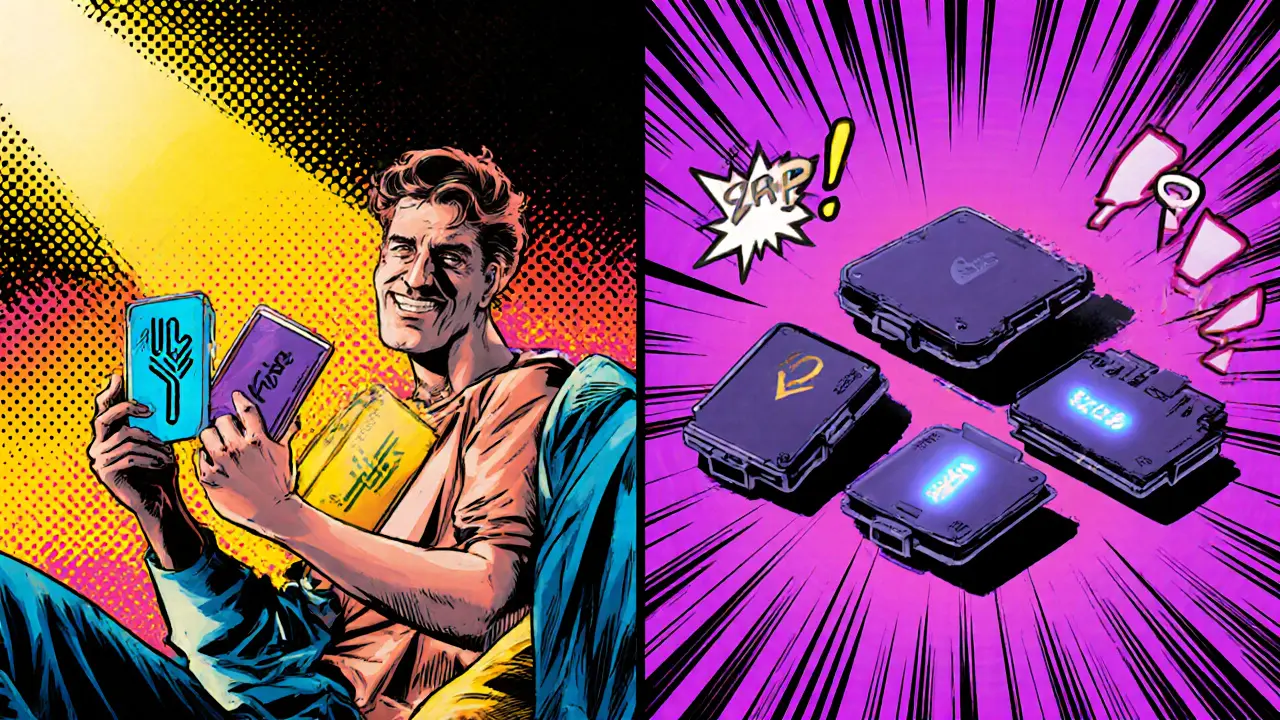2-of-3 Multisig: How It Secures Your Crypto
When working with 2-of-3 multisig, a threshold signature arrangement that needs any two of three private keys to approve a move. Also known as 2‑of‑3 multisignature, it lets a group share control while preventing a single key from acting alone. This setup is a core piece of multisignature wallet, a tool that stores crypto behind multiple approvals. By demanding two signatures, the wallet raises the bar against theft, loss, and accidental spend.
Why Threshold Signatures Matter in Everyday Use
Think of threshold signatures as the rulebook: they define how many participants must agree before a transaction is valid. This rule directly influences blockchain security. If one key is compromised, the attacker still needs a second key, cutting the risk dramatically. The 2-of-3 multisig model also balances convenience and safety—two signatures are easier to gather than three, yet still protect against single‑point failure.
In practice, teams use 2-of-3 multisig for treasury management, DAO voting, and personal crypto insurance. A typical trio might include a founder’s key, an auditor’s key, and a hardware‑wallet key. When a payout is needed, any two members sign, and the transaction rolls out. This pattern shows how multisignature wallet designs translate into real‑world governance: they enforce collaboration, reduce insider threats, and keep assets under collective oversight.
Setting up a 2-of-3 scheme requires a few steps. First, generate three distinct private keys—preferably on separate devices. Next, create a multisig address that encodes the two‑of‑three rule. Finally, test with a small transfer to confirm that any two keys can sign. Many wallets, like Electrum, Bitcoin Core, and hardware solutions such as Ledger, support this flow out of the box. The process highlights the link between threshold signatures and user experience: the more tools automate the steps, the easier it is for non‑technical users to adopt strong security.
Security audits often cite 2-of-3 multisig as a best practice for high‑value holdings. By spreading authority, the arrangement limits the damage of a lost or stolen key. It also simplifies recovery: if one key is lost, the remaining two can still access funds, unlike a single‑key wallet that becomes irretrievable. This redundancy is a key attribute of robust crypto stewardship.
Beyond Bitcoin, the concept spreads to Ethereum, Solana, and newer chains that support smart‑contract‑based wallets. In Ethereum, contracts like Gnosis Safe let you customize the signature threshold, often using a 2‑of‑3 preset for DAO treasuries. The same principle applies: the contract enforces that two out of three owners must approve an action before it executes. This shows the semantic bridge between multisignature wallet and smart‑contract platforms.
Choosing the right number of signers depends on the use case. Three signers give a clear majority, while two‑of‑three offers flexibility without over‑complicating coordination. Too many signers can slow down operations, especially in time‑sensitive markets. The sweet spot of 2-of-3 balances speed and protection, making it a popular choice for both individuals and organizations.
When you read the articles below, you’ll see how 2‑of‑3 multisig intersects with topics like mining difficulty, airdrop safety, and exchange reviews. Those pieces show why security fundamentals matter across the crypto ecosystem. Whether you’re evaluating a new exchange or protecting an airdrop claim, the multisig mindset—requiring multiple approvals—offers a consistent safety net.
Now that you have a solid grounding in what 2-of-3 multisig is, why it’s crucial for blockchain security, and how it fits into wallets and smart contracts, you’re ready to dive into the curated posts. They cover real‑world examples, step‑by‑step guides, and the latest industry insights that build on these core principles.

2-of-3 vs 3-of-5 Multisig Wallets: Which Is Right for You
Compare 2-of-3 and 3-of-5 multisig wallets, see which offers better security, ease of use, and fit for individuals or institutions.
February 14 2025